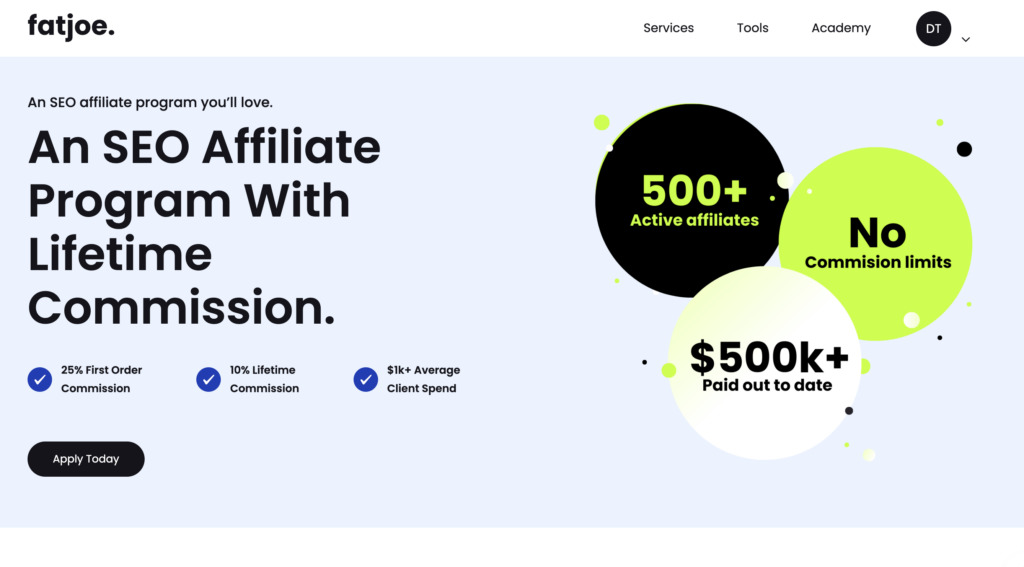SEO Affiliate Marketing: How to Boost Your Ranking and Drive More Sales
Daniel Trick
Feb 16, 2024
10 min read
Affiliate marketing is a strategy where you promote products or services and earn a commission for every sale or lead you generate.
SEO is the process of making your website more visible in search engines like Google. It’s one of the best ways to drive traffic to an affiliate website.
You can generate clicks and boost your affiliate earnings without spending money on promoting your content.
In this guide, we’ll explore how these strategies work and the tactics you can use to improve your search rankings.
We’ll cover:
- What affiliate marketing is and how it works
- The basics of SEO
- How SEO and affiliate marketing work together
- SEO strategies for affiliates
- Common affiliate marketing SEO challenges
- How SEO agencies can use affiliate marketing
What Is Affiliate Marketing And SEO?
Affiliate marketing is a performance-based digital marketing strategy. A business pays its affiliate partners a commission for the sales they generate through referrals.
SEO is all about improving visibility in search results to drive more traffic. The more eyeballs you can get on your affiliate links, the more likely you are to generate clicks and affiliate sales.
What Is Affiliate Marketing?
Affiliate marketing is about connecting businesses with potential customers.
A company partners with third-party publishers and websites to reach a larger audience and promote their products and services. These third-party partners are called affiliates.
The affiliate marketer receives a unique link to track the traffic and sales they send to the company. When somebody clicks on the affiliate link and makes a purchase, the affiliate earns a commission.
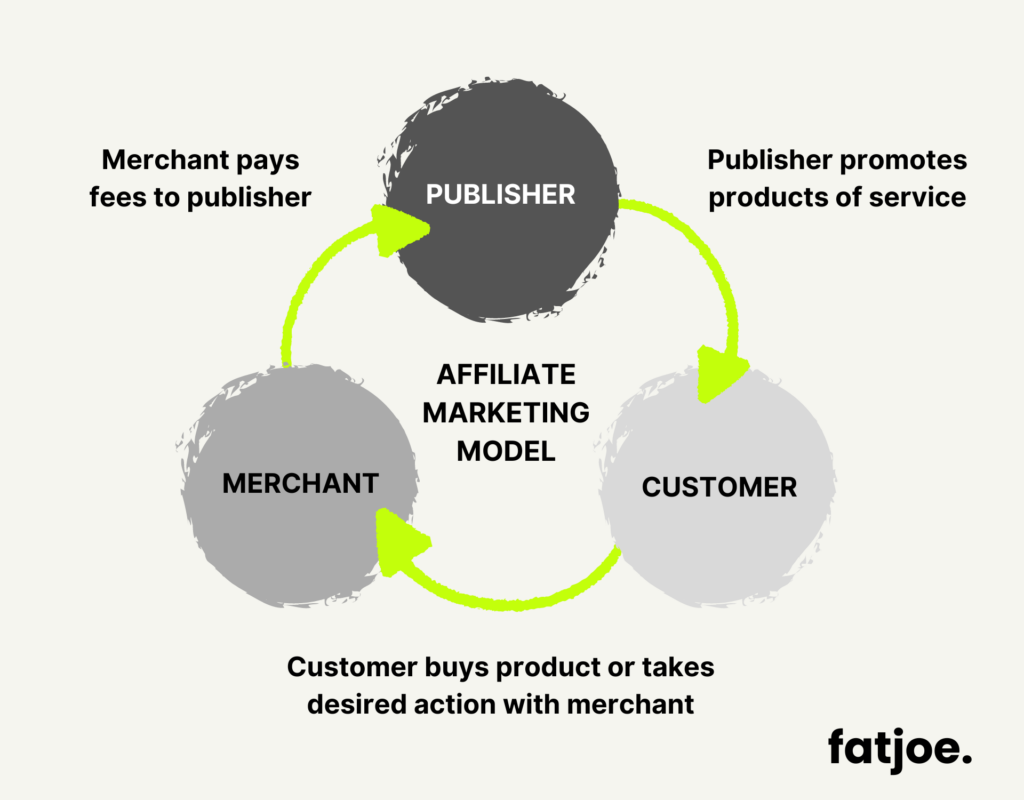
How Affiliate Marketing Works
Here’s how the affiliate marketing process works:
Step 1: Sign Up for an Affiliate Program
The first step is to find an affiliate program that fits your website and audience well. There are a ton of affiliate programs out there. You’ll find affiliate products and programs ranging from ecommerce giants like Amazon to super-niche services.
Step 2: Get Your Affiliate Links
After you’ve signed up and been approved, you’ll be able to access affiliate links. These are unique links that track the number of sales that come from people clicking your affiliate links.
Step 3: Promote the Products
The next step is to create content and share your affiliate links. That could be product reviews, tutorials, blog posts, and other types of content. Your goal is to help your audience solve a problem or make a purchasing decision.
Step 4: Track Your Success
You’ll usually be able to track the performance of your links in a dashboard. It’s important to keep track of which products are performing well and what needs to be improved.
You might want to change the products you recommend if you struggle to make sales.
Step 5: Earn Commissions
When someone clicks on your link and makes a purchase, you’ll earn a commission on the sale. The amount you’ll receive depends on the program. Generally, commissions are higher for digital products as they offer a higher profit margin than most physical products.
Key Benefits of Affiliate Marketing for Businesses and Affiliates
Affiliate marketing can be a win-win for the business and the partner promoting its products.
The most significant advantage for the business is that affiliate marketing is performance-based. They only have to pay the affiliate when they generate an actual sale.
That means it can be more cost-effective than traditional advertising. You don’t have to spend any money upfront without a guarantee of making sales.
For publishers, affiliate marketing is a great way to monetize content. It also doesn’t require any investment to get started. All you need to do is create content.
Once you create the content and add your affiliate links, you can earn commissions while you sleep.
How SEO Works With Affiliate Marketing
Search engine optimization (SEO) is super effective for affiliate marketing because people use search engines to research products and find solutions to problems.
A recent survey found that 51% of shoppers use Google to research products they plan to buy online:
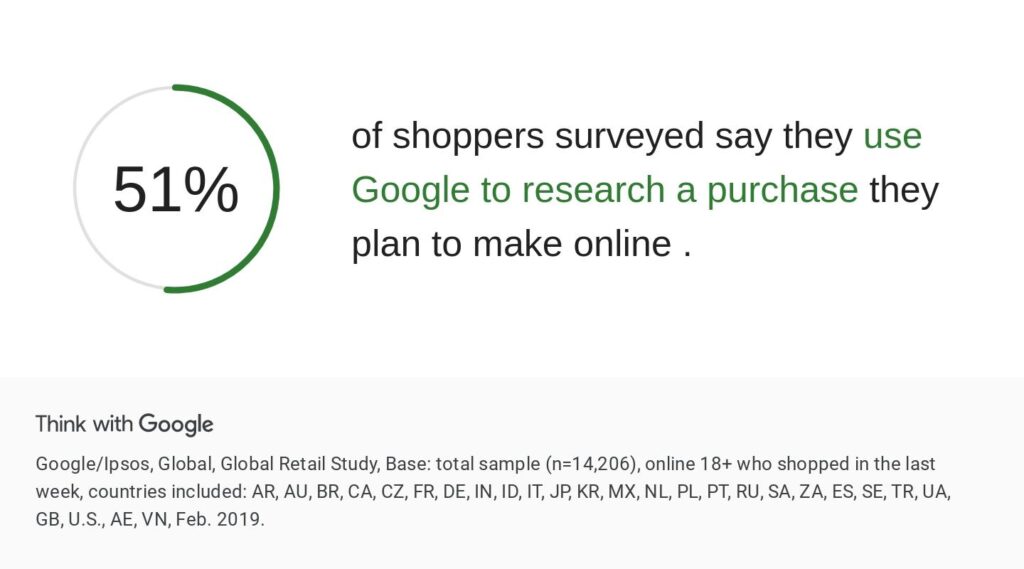
By getting your product review, buyer’s guide, or blog post to rank high in search results, you can attract an audience of people who are interested in the products you’re promoting.
Organic search traffic also tends to have a higher conversion rate than traffic from social media or paid channels.
By creating valuable content targeting the right keywords, you can attract visitors who are likely to click on your affiliate links and make purchases.
You can’t expect to make affiliate marketing a success overnight if you haven’t done the groundwork first. Keyword Research and SEO are where you need to start first.
— Neesha – The Fun Money Club (@thefunmoneyclub) July 18, 2021
The Three Pillars of SEO
There are three main pillars of SEO that you need to focus on to boost your ranking in search results and drive more traffic to your affiliate content.
On-Page SEO
On-page SEO focuses on the content on your website. It involves targeting the right keywords, strategically using them in your content, and ensuring your content is easy for users and search engines to understand.
There are a lot of different aspects that go into on-page SEO. Check out our on-page SEO checklist for a more detailed breakdown.
Off-Page SEO
Off-page SEO is all about building your site’s reputation and authority. The big thing here is backlinks. The more backlinks you have from relevant, high-authority websites, the higher your content will rank in search results.
You can discover the techniques to build high-impact backlinks in our off-page SEO guide.
Technical SEO
Technical SEO is about making sure your website performs well for users and can be crawled and indexed by search engines. It includes aspects like page speed, making your site mobile-friendly, schema markup, and other technical elements.
If you need some help with the technical aspects of SEO, take a look at our technical SEO guide. It shows you how to audit and improve technical SEO performance.
SEO Strategies for Affiliate Marketers
Here are the SEO strategies you can use to drive more organic traffic to your affiliate marketing content.
Focus on Commercial and Problem-Based Keywords
When people are close to making a purchase, they use commercial investigation keywords to find content that helps them compare their options. They search for phrases that include words like:
- Review
- Comparison
- Best
- Top
- Versus (vs.)
Targeting these keywords can be super effective for affiliate marketing. You can attract searchers who are close to making a purchase but are still deciding which is the best option for them.
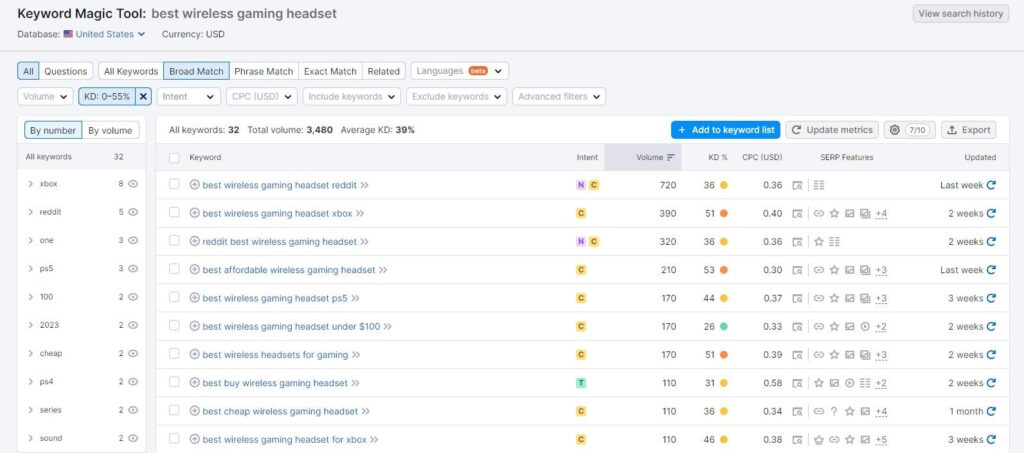
The problem with these commercial investigation keywords is that they can be very competitive.
That’s why it’s important also to target more informational, problem-based keywords. People use these terms when searching for a solution.
For example, someone searching for the keyword phrase ‘how to get better sleep’ is actively searching for a solution. You could create content recommending products to help the user overcome the problem.
You can use keyword research tools like Ahrefs and Semrush to get insights into the search volume and competitiveness of keywords.

Ideally, you want to focus on keywords with a reasonable search volume without being ultra-competitive.
High competition doesn’t always mean you should avoid a keyword. It shows there is a market, and affiliates are likely making sales targeting the term.
But if high-authority sites dominate the SERP, you might want to focus your efforts on a more achievable keyword.
Explain the Benefits of the Product or Service
Focus on the benefits of the product. Including the features is important, but you need to explain how they can benefit the reader.
The biggest mistake I’m seeing with people doing Affiliate Marketing is not clearly explaining the benefits of the product.
What problem does it solve?
How can this help your potential customer?
What are the benefits?
This can be done effectively.
Stop. Being. Lazy.
— Joe Hart (@JHartFlips) January 24, 2020
For example, if you are reviewing a coffee maker with a programmable feature, tell the reader how that feature can benefit the reader. Instead of waiting every morning, they can use the programmable feature to wake up to a freshly brewed pot of coffee.
You should also be honest about the product. If there are downsides to a product or service, mention them. This can help you build trust with the reader and make your content stand out.
It’s also important to answer questions that people might have. Your goal is to create the last piece of content people will read before making a purchase.
By answering the common questions readers might have about the product, you help them overcome barriers to purchasing and make them more likely to click your affiliate link.
Use Blogger Outreach To Improve Site Authority and Rankings
Backlinks are one of the most influential Google ranking factors.
The more high-authority links pointing to your site, the more likely you are to rank high in search results.
A recent study by Detailed backs this up. The study found that websites with a higher Domain Rating were more likely to appear on the first page of Google search results for affiliate marketing keywords.
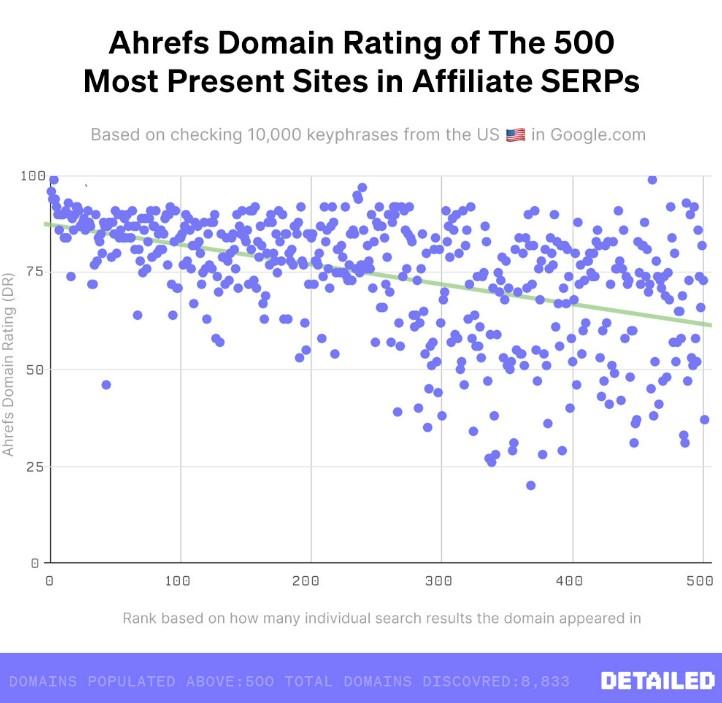
Domain Rating (DR) is a metric developed by Ahrefs to estimate the strength of a website’s backlink profile on a scale from 0 to 100. While DR is not a Google ranking factor, it’s still a useful metric for judging ranking potential.
One of the best ways to increase your DR is to earn backlinks from reputable sites in your niche through blogger outreach and guest posting.
With blogger outreach, you contact website owners with the goal of getting them to mention your content and include a link to your site in one of their posts. In some cases, you might even collaborate on a new post.
Guest posting is when you provide a piece of content that the blogger posts on their site. The blogger gets high-quality content to share with their audience, and you get a link back to your site in return.
Both of these strategies can help you build your DR and drive referral traffic to your affiliate content.
There are a lot more ways to earn backlinks. Check out our link building guide to discover the other tactics you can use to boost your DR and increase your rankings.
Make Your Affiliate Site Fast to Load
Mobile now accounts for 58.21% of global internet traffic. That’s why Google now uses mobile-first indexing.
That means the mobile version of your site is used to determine ranking in search engine results. So, your website needs to perform well on mobile devices.
Aside from using a responsive design that adjusts to the user’s screen size, the big thing here is page speed. Mobile users are less patient than desktop users.
If your site takes forever to load, visitors will bounce. That sends a signal to Google that your site doesn’t offer a good experience.
You can use Google’s PageSpeed Insights tool to test your site speed.
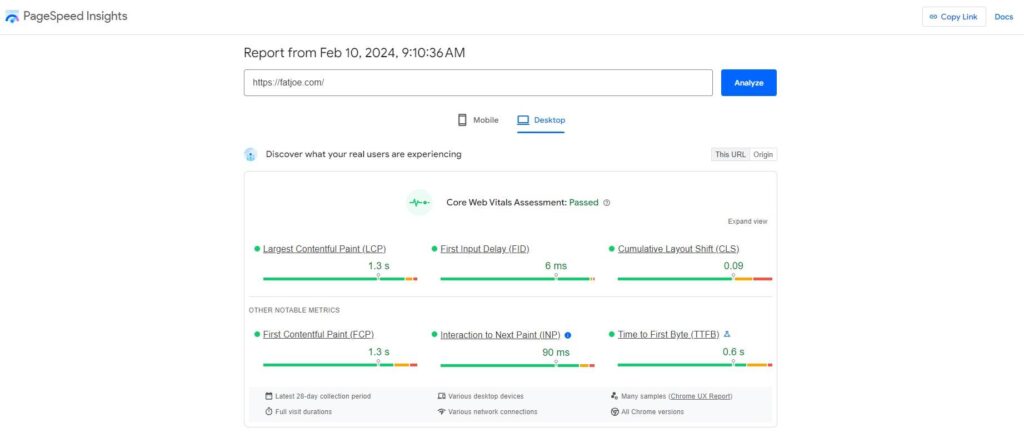
It will also provide advice on how you can improve loading times. That could involve compressing images, using browser caching, and minifying CSS and JavaScript files to speed things up.
HubSpot has a comprehensive guide with many more tactics to improve loading times and speed up your site for mobile users.
SEO Challenges in Affiliate Marketing
Some SEO challenges are unique to affiliate marketing. Here are the common issues that affiliate marketers encounter and tips on overcoming them.
High Competition
Affiliate marketing can be super competitive.
There are a ton of affiliates promoting the same products in some niches. It can be challenging to stand out.
One way to overcome this challenge is to focus on long tail keywords. These terms might have a lower search volume but are less competitive. And they often have a higher conversion rate as they are more specific.
You can also make your affiliate content stand out by producing unique content. If you are reviewing a product, offer your personal experience or try to provide insights not covered by your competitors.
For example, the Oxfoot YouTube channel makes its affiliate content unique by testing camping gear in a real-world setting.
Keeping Content Fresh and Relevant
Here’s the thing. You can’t truly earn passive income with affiliate marketing.
Once you’ve published your content, you need to keep it updated. From pricing to new product features, there are a lot of things that can change. It’s vital that you provide your audience with the latest information about the products and services you promote.
Regular updates keep your content relevant and also signal to search engines that your site is active. That can have an impact on rankings.
Your content plan should include new posts, but it should also involve regularly reviewing and refreshing older posts.
Building Quality Backlinks
Building high-quality backlinks isn’t easy. We’ve already mentioned how you can use blogger outreach and guest posting for link building. But building links one at a time can take a lot of resources.
However, there are ways you can earn multiple links from the same piece of content.
You can make your content more link-worthy by collecting publicly available data and presenting it in a comprehensive study or shareable infographic. This is a digital PR tactic that many brands and affiliate sites have used to successfully get links from high authority sites.
You can use our infographic design service if you need some help with the content creation.
Balancing Affiliate Links and User Experience
Adding affiliate links to your content is how you earn clicks and commissions. However, overusing them can have a negative impact on user experience (UX).
Just tried to read a blog post but could hardly follow the thread of the text with all the mediavine ads and vaguely related affiliate product ads all the way through. Making money as a blogger isn’t shameful but do try to think of the user experience. I gave up reading it.
— Zoe C (Mama Geek) 👾 (@zoecorkhill) November 4, 2020
You want your affiliate links to fit within your content naturally. They should offer value to the reader rather than being a distraction or feeling forced.
It’s also important to be transparent with your audience. Make it clear that your content includes affiliate links.
Affiliate Marketing for SEO Agencies
We’ve focused on SEO for affiliate marketing in this post. But affiliate marketing can also be an effective promotional tactic for SEO agencies looking to attract new clients.
You can set up an affiliate program to encourage publishers and businesses to refer new clients.
This is something we have done here at fatjoe. Our SEO affiliate program offers 25% commission for their first order and 10% lifetime commission for new clients. We’ve paid out over $500,000 to our affiliates since we started the program.
You can also reach out directly to your current and past clients. They can act as affiliates by referring other businesses to your agency. As a reward, you can offer a discount on your services, cash, or something more unique, like a free meal at a top restaurant.
Getting More Affiliate Sales With SEO
SEO and affiliate marketing can be a powerful combination.
Once you’ve found the right affiliate program, you can use SEO tactics to drive traffic to your content, boost your online visibility, and generate more clicks and affiliate revenue.
It’s about targeting the right keywords, creating valuable content, and building a solid technical foundation. From there, you can use link building strategies to increase your site authority and climb the Google rankings.
Become a Pro at SEO
Join 65,000 others and learn the secrets to SEO success with our weekly blog posts.

